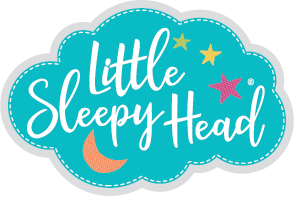Screen Time Boundaries: Strategies for Parents

Share
Technology plays a big role in parenting today, offering both educational benefits and challenges. As toddlers increasingly engage with screens, parents must find a balance that fosters development while ensuring healthy habits. But how much is too much? And how can you set effective boundaries? Let’s explore research-backed strategies to help your family find the right approach—while incorporating everyday comfort items like a toddler pillow with pillowcase to support screen-free relaxation.
Understanding Screen Time Recommendations
Experts suggest different screen time limits based on age:
- Infants (0-18 months) – Avoid screen time, except for video calls.
- Toddlers (18-24 months) – Limited, high-quality content with parental interaction.
- Preschoolers (2-5 years) – Up to one hour per day of educational programming.
- School-age children (6+ years) – Consistent limits tailored to family needs.
Excessive screen time can lead to issues like sleep disruption, reduced attention span, and emotional regulation challenges. Research shows that establishing clear boundaries improves focus, promotes better sleep, and strengthens family relationships.
Effective Strategies for Managing Screen Time
1. Set Clear Limits
Define screen time rules to ensure balance. Consider:
- Time-based restrictions – Limit daily screen usage (e.g., 30 minutes in the morning and 30 minutes in the evening).
- Content priorities – Encourage interactive, educational programming before passive entertainment.
- Situational rules – No screens during meals, family time, or right before sleep.
Pro Tip: Incorporate a screen-free bedtime routine by encouraging toddlers to cuddle with a pillow pillow or snuggle up with their favorite pillow and pillowcase, making relaxation more engaging than screens.
2. Create Technology-Free Zones
Designate areas where screens are off-limits to encourage better habits:
- Bedrooms – Screens before bedtime can disrupt sleep patterns, making a cozy toddler pillow an essential part of nighttime comfort.
- Dining spaces – Promote conversation during meals instead of digital distractions.
- Outdoor spaces – Encourage physical activity and imaginative play.
Pro Tip: Make screen-free zones more inviting by adding a pillow pillowcase with soft textures or favorite prints, making non-screen activities more appealing.
3. Use Comfort Items to Support Screen-Free Time
Introducing a pillow with pillowcase as part of a relaxation routine helps toddlers transition away from screens:
- Select a pillow pillowcase with soothing textures or favorite designs to create excitement for bedtime.
- Use a toddler pillow to encourage a screen-free wind-down routine, such as storytelling or quiet music.
- Associate their pillowcase pillow with comfort and calm, helping shift their focus away from screens.
Pro Tip: Teach toddlers to rely on their pillow and pillowcase as a comfort tool, making relaxation time screen-free and engaging.

4. Use Parental Controls & Monitoring
Technology can be useful if managed effectively. Consider:
- Built-in parental controls – Limit screen time duration and filter content.
- App usage tracking – Observe patterns to prevent excessive exposure.
- Scheduled downtime settings – Enable features that temporarily disable screens during certain hours.
Pro Tip: Pair screen limits with a soft toddler pillow for quiet time. This teaches toddlers that comfort and relaxation don’t have to rely on screens.
5. Model Healthy Screen Habits
Children absorb behaviors by watching their parents. Establish mindful screen practices such as:
- Prioritizing face-to-face interaction – Encourage active listening and engagement.
- Creating tech-free family time – Set hours where everyone puts away screens.
- Using screens purposefully – Demonstrate balanced screen use.
Pro Tip: Keep a pillow and pillowcase nearby during family activities. Using it for relaxation sets an example that comfort and connection go beyond digital entertainment.
6. Encourage Alternative Activities
Replacing screen time with interactive, creative activities fosters learning and development. Try:
- Storytime – Create a nighttime tradition where toddlers cuddle their pillowcase pillow while listening to bedtime stories.
- Outdoor play – Explore nature-based activities like running, climbing, or sensory exploration.
- Creative tasks – Provide puzzles, arts, or crafts to stimulate the mind.
Pro Tip: Introduce a comfort-driven routine where toddlers pick a favorite pillow with pillowcase and use it during non-screen relaxation activities like storytelling or quiet play
Final Thoughts
Screen time isn’t inherently bad—it’s all about balance. By setting clear boundaries, integrating comfort items like a toddler pillow with pillowcase, and modeling healthy screen habits, parents can help children develop a positive relationship with technology while promoting restful, screen-free moments.




